It’s no surprise that I am enamored of the witch. I have drawn her in all her incarnations, back to her most powerful mothers. I have studied her, gorging myself on sociological studies of the ‘child stealers,’ and the female trinity. Yet, I haven’t written much about her, so here is my first look at the witch. As much as the internet is great, it is also not always the best place to get substantive information on ancient things. There are plenty of sites regurgitating the same information and descriptions of Baba Yaga (Wikipedia) with reference to the folktales that originally sketched her visage and character. I needed to be sure; I looked for those folktales, the most famous of which is Russian Fairy Tales from the Pantheon Fairy Tale and Folklore Library, by Aleksandr Afanasev, translated by Norbert Guterman and illustrated b Alexander Alexeieff. It just happened to live on the shelf of my personally library, a relic of my childhood (I spilled milk on it when I was six or so).
Baba Yaga the boney legged, or, in one story, the golden legged, is one of three sisters. She has three daughters, sometimes beautiful and sometimes deformed. She has claws and a nose that hits the ceiling of her ‘little hut’ where she often lies stretched from corner to corner. She is sometimes helpful to youth on a quest, mostly devious towards young women, and often devising ways to eat her visitors. She sharpens or ‘whets’ her teeth for these chow downs and can gnaw through whole forests. Her ambiguous intentions to people make her stand out in folklore where characters are usually only evil or only good (Johns, 1998).
Baba Yaga has servants; sometimes these are youth who take on temporary servitude in order to get something from her, and sometimes these are maids who have been given to her for some other favor. She commands oxen, eagles, and magical mares. And her primary, if not only, mode of transportation is folded up in a mortar which she goads along though the sky with a pestle and sweeps her tracks away with a broom. I have not yet figured out how she could fly in such a thing and still need to sweep her tracks away, though these tools also allude to other, older, things like the potions ancient wise women mixed up, winter winds, and a the sweeping of the oven after eating (Cooper, 1997). Like many evil spirits, Baba Yaga is driven to count things and cannot cross a river or other running water.
There are obviously more stories, poems and traditional references than what I found in Russian Fairy Tales, because everywhere I look for information I find more and more terrible descriptions of Baba Yaga. Brian Cooper writes in his article “Baba-Yaga, the Bony-legged” that her bones stick out of her body in places, her flight through the air in her iron mortar is borne by demons and raises a tempest that brings pestilence and death to all she passes over. She has but one tooth, a wand that can turn people to stone, and is the guardian of the water of life (1997) much like the ancient symbol of the snake which gave her one of her earliest names: ‘snake-baba’ (Scielzo, 1983). It’s no wonder she would be depicted so frighteningly if, as Cooper continues, she is the result of a campaign of demonization, by the Church, of the local sorceresses or wise women. Her diverse and contradictory characteristics lead people to rank her among famous goddess-like witches like Lilith and Hecate, each often called the Mother of All Witches (Pilinovsky, 2005).
Now, lets talk about her ‘little hut.’ I have mentioned before that her hut’s name is Ishbuku, and I swear I have seen it written this way before though I cannot, for the life of me, find that place again. In the stories from Afanasev’s Russian Fairy Tales, people ask the hut, “little hut, little hut, stand the old way with your back to the woods and your front to me.” Google Translate tells me the romanized spelling of the Russian for ‘little hut’ is izbushka. Vladimir Propp, who analyzed Baba Yaga’s character as hearkening back to an ancient Slavic initiation ritual (Johns, 1998), suggests that the hut is related to izbushkii: initiation huts where the young experience a symbolic death to later emerge as full adults (Pilinovsky, 2005). Izbushka, stands on chicken legs, though sometimes only one chicken leg, and sometimes chicken legs with dog’s heals, whatever that looks like. It is turning in the field when people approach and only stops and lowers itself when called in the right way. At one point there are twelve stakes around the house with eleven heads stuck upon them. The headless stake was used as a threat to a questing youth. The youth, like many on a quest in tales of Baba Yaga, survived his encounter with her.
I have also read Baba Yaga described as having tusks and nails of steel or iron, but I could find no reference to such in the stories of Russian Fairy Tales. She is sometimes said to have a hump in her back, but I could also not find that. I did find, in my larger research, references to traditional poetry and rhymes where Baba Yaga appears again. I will be on the hunt for those.
Referenced:
- Afanasev, A. (1973) Russian Fairy Tales. Pantheon Fairy Tale and Folklore Library.
- COOPER, B. (1997). Baba-Yaga, the Bony-Legged: A Short Note on the Witch and Her Name. New Zealand Slavonic Journal, 82.
- Johns, A. (1998). Baba Iaga and the Russian mother. Slavic & East European Journal, 42(1), 21-36.
- Pilinovsky, H. (2005). The Mother of All Witches: Baba Yaga and Brume in Patricia McKillip’s In the Forests of Serre. Extrapolation, (1), 36.
- Scielzo, C. (1983). An analysis of bába-yagá in folklore and fairy tales. American Journal Of Psychoanalysis, 43(2), 167. doi:10.1007/BF01253476

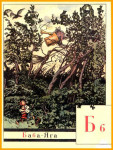
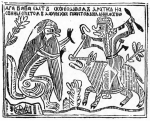
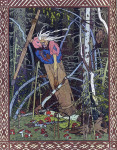
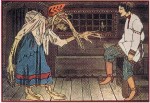
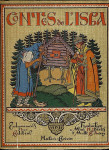
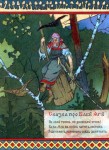
2 Comments
There is an episode of Scooby Doo Mystery Incorporated about a Russian witch who has a house that gets up and walks around on chicken legs. I had no idea that was about Baba Yaga. As I’m reading your post above, when I read a house that stands on chicken legs, I immediately remembered I had seen something with a house with chicken legs. It took me a minute to remember which show it was. That show is so much deeper than you would ever believe a Scooby Doo cartoon could be. All the episodes have so much going on. I’m glad now I understand the reference. Thank you for enlightening me!
Glad to be of service! The hut on chicken legs really is like a secret that everyone knows. It shows up all over the place.